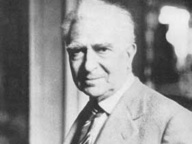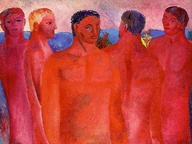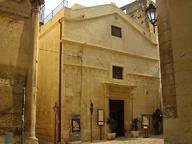WUNDERKAMMER. Studies, discoveries, restorations for the "Grande Correr
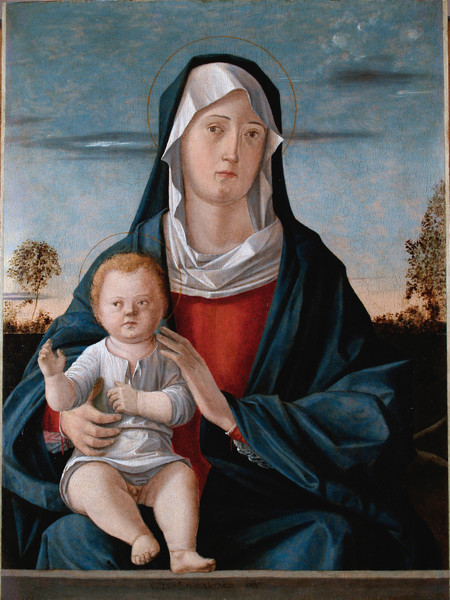
V. Carpaccio, Madonna con il bambino, Wunderkammer. Studi, scoperte, restauri per il ‘‘Grande Correr’’
From 17 Aprile 2013 to 31 Marzo 2014
Venice
Place: Museo Correr
Address: Piazza San Marco
Times: From April 1st to October 31st: 10am-7pm (ticket office 10am-6pm). From November 1st to March 31st: 10am-6pm (ticket office 10am-5pm). Closed on December 25th and January 1st.
Ticket price: full €16, reduced €8.
Telefono per informazioni: 848082000
E-Mail info: info@fmcvenezia.it
Official site: http://correr.visitmuve.it/
In 2013, nine rooms on the first floor of the Museo Correr have been reset, creating a surprising “collection of wonders”. Over 300 works from the rich collections of the Civic Museums are now part of the itinerary of the Correr Museum, evoking the charm of a possible “Wunderkammer”.
This exhibition reveals the results of the continuous work of cataloguing, study and restoration of the collections. A project that adds a further piece – after the restoration of the Sissi’s Apartments – in the program of restoration, improvement and revision of theitineraries of the museum overlooking Piazza San Marco, with the aim to create a “Big Correr“.
Teodoro Correr, the builder of the core of the collection of the Civic Museums of Venice, is remembered in the first room with a portrait and drawings of his palace on the Grand Canal in San Zandegolà. In addition, the Correr collection of paintings from previous collections of antiquities, records with great immediacy the Venetian taste of htat period. One room is then entirely dedicated to sacred art objects, among which it’s possible to find, in addition to an extraordinary narwhal tooth, two of the four tapestries from Santa Maria degli Angeli in Murano.
Superb is the room that gathers and presents, for the first time, a small “Dio padre” by Lorenzo Lotto, an extraordinary “Portrait of Ferrante d’Avalos” that the tradition attributed to Leonardo, a drawing with “Sant ‘Anna” by Dürer and three recent attributions to Vittore Carpaccio: a “Madonna and Child” (1487 ca.), a “Pietà” (1487 – ’90 approx.) of extraordinary emotional intensity, and the exceptional ” Portrait of Doge Leonardo Loredan “(1505 ca.). Then, wood paintings of northern origin, as the remarkable “Salvator Mundi” assigned to Quentin Massys (1495 ca.) and paintings such as the curious “Portrait of Bernard Bergonzi” by the Bolognese Prospero Fontana.
There are also rarities such as the bracelet “bringing salts” made with apricot seeds, Greek and Roman coins, gems and their Renaissance reproductions; the masterful metals held in Venice by Orazio Fortezza, the spectacular Cupboard Venier from Germany, the precious altarpieces-reliquaries for private devotion alongside the Service Correr, built in 1520 approx. by Nicola da Urbino, a masterpiece of Renaissance majolica.
Also notable is the selection of bronze statues and plaques, with works from Padua and Venice, realized from the second half of the 15th to the early 17th century by great names of bronze production: Andrea Briosco called Riccio, Savero Calzetta from Ravenna, Tiziano Aspetti. Among the medals, stand-known specimens of rare quality due to Pisanello, Matteo de ‘Pasti, Gentile Bellini.
Finally, in the last room are exposed “The arrival in Venice of Ercole I d’Este, Duke of Ferrara” attributed to Lazzaro Bastiani, a large woodcut by Titian that recalls “The drowning of Pharaoh in the Red Sea” and what is perhaps the most famous bird’s eye perspective view of Venice: the woodcut by Jacopo de Barbari, realized at the beginning of the a6th century and composed of six sheets of paper glued.
This exhibition reveals the results of the continuous work of cataloguing, study and restoration of the collections. A project that adds a further piece – after the restoration of the Sissi’s Apartments – in the program of restoration, improvement and revision of theitineraries of the museum overlooking Piazza San Marco, with the aim to create a “Big Correr“.
Teodoro Correr, the builder of the core of the collection of the Civic Museums of Venice, is remembered in the first room with a portrait and drawings of his palace on the Grand Canal in San Zandegolà. In addition, the Correr collection of paintings from previous collections of antiquities, records with great immediacy the Venetian taste of htat period. One room is then entirely dedicated to sacred art objects, among which it’s possible to find, in addition to an extraordinary narwhal tooth, two of the four tapestries from Santa Maria degli Angeli in Murano.
Superb is the room that gathers and presents, for the first time, a small “Dio padre” by Lorenzo Lotto, an extraordinary “Portrait of Ferrante d’Avalos” that the tradition attributed to Leonardo, a drawing with “Sant ‘Anna” by Dürer and three recent attributions to Vittore Carpaccio: a “Madonna and Child” (1487 ca.), a “Pietà” (1487 – ’90 approx.) of extraordinary emotional intensity, and the exceptional ” Portrait of Doge Leonardo Loredan “(1505 ca.). Then, wood paintings of northern origin, as the remarkable “Salvator Mundi” assigned to Quentin Massys (1495 ca.) and paintings such as the curious “Portrait of Bernard Bergonzi” by the Bolognese Prospero Fontana.
There are also rarities such as the bracelet “bringing salts” made with apricot seeds, Greek and Roman coins, gems and their Renaissance reproductions; the masterful metals held in Venice by Orazio Fortezza, the spectacular Cupboard Venier from Germany, the precious altarpieces-reliquaries for private devotion alongside the Service Correr, built in 1520 approx. by Nicola da Urbino, a masterpiece of Renaissance majolica.
Also notable is the selection of bronze statues and plaques, with works from Padua and Venice, realized from the second half of the 15th to the early 17th century by great names of bronze production: Andrea Briosco called Riccio, Savero Calzetta from Ravenna, Tiziano Aspetti. Among the medals, stand-known specimens of rare quality due to Pisanello, Matteo de ‘Pasti, Gentile Bellini.
Finally, in the last room are exposed “The arrival in Venice of Ercole I d’Este, Duke of Ferrara” attributed to Lazzaro Bastiani, a large woodcut by Titian that recalls “The drowning of Pharaoh in the Red Sea” and what is perhaps the most famous bird’s eye perspective view of Venice: the woodcut by Jacopo de Barbari, realized at the beginning of the a6th century and composed of six sheets of paper glued.
SCARICA IL COMUNICATO IN PDF
COMMENTI

-
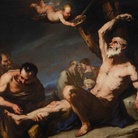 Dal 23 aprile 2024 al 01 settembre 2024
Bergamo | Accademia Carrara
Dal 23 aprile 2024 al 01 settembre 2024
Bergamo | Accademia Carrara
-
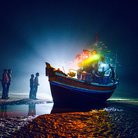 Dal 26 aprile 2024 al 09 giugno 2024
Reggio nell'Emilia | Sedi varie
Dal 26 aprile 2024 al 09 giugno 2024
Reggio nell'Emilia | Sedi varie
-
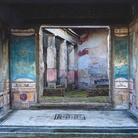 Dal 23 aprile 2024 al 16 giugno 2024
Roma | Castel Sant’Angelo
Dal 23 aprile 2024 al 16 giugno 2024
Roma | Castel Sant’Angelo
-
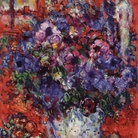 Dal 20 aprile 2024 al 27 ottobre 2024
Conversano | Castello Conti Acquaviva D'Aragona
Dal 20 aprile 2024 al 27 ottobre 2024
Conversano | Castello Conti Acquaviva D'Aragona
-
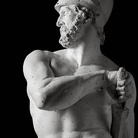 Dal 20 aprile 2024 al 29 settembre 2024
Possagno | Museo Gypsotheca Antonio Canova
Dal 20 aprile 2024 al 29 settembre 2024
Possagno | Museo Gypsotheca Antonio Canova
-
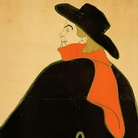 Dal 20 aprile 2024 al 21 luglio 2024
Torino | Mastio della Cittadella
Dal 20 aprile 2024 al 21 luglio 2024
Torino | Mastio della Cittadella

